Слайд 2URBANIZATION
It is the process by which large numbers of people become

permanently concentrated in relatively small areas, forming cities.
Слайд 3What is a ‘city’?
Recommendations by the United Nations:
all places with more than

20,000 inhabitants living close together are urban.
The USA: places with more than 2500 inhabitants .
are considered as urban.
France: agglomerations of 2000 people living
in contiguous housing.
The Netherlands: municipalities with 2000 inhabitants.
Portugal: agglomeration with at least 10,000 inhabitants.
Слайд 4Preconditions of urbanization
Improvement in
agriculture;
transportation.

Слайд 5Main engines of urbanization
Creation of new jobs in the process of industrialization,

development of commerce and administration.
Better than in rural areas public services.
Relatively developed retail market.
Слайд 6What is attractive in cities?
Samuel Johnson (1777):
“When a man is tired of

London, he is tired of life; for there is in London all that life can afford.”
Слайд 7Minuses of Urban Life
Bad ecology.
Expensive housing.
High density of population.

Big distance between home, work and public institutions.
Слайд 8URBAN HOUSING
Apartment houses.
Townhouses.
Family houses.

Слайд 10Dynamics of Urbanization
The share of the world’s population living in cities of

20,000 or more:
- 1800 - less than 3 percent;
1900 – 13 percent;
1950 – 29 percent;
- 2005 – 49 percent;
- 2030 – 60 percent (project).
the end of the 20th century - nearly 50 percent.
Слайд 12Rural areas
Rural areas (also referred to as "the country", countryside) are settled

places outside towns and cities. Inhabitants live in villages, hamlets, on farms and in and in other isolated houses.
Слайд 13Economic basis of rural areas
agriculture;
logging;
mining;
petroleum and gas exploration;
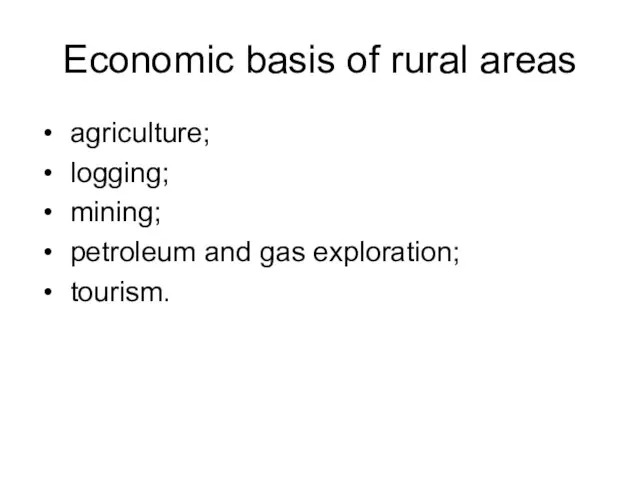
tourism.
Слайд 14Specific of Life in Rural Areas
Limited services (especially public services.
Utilities like
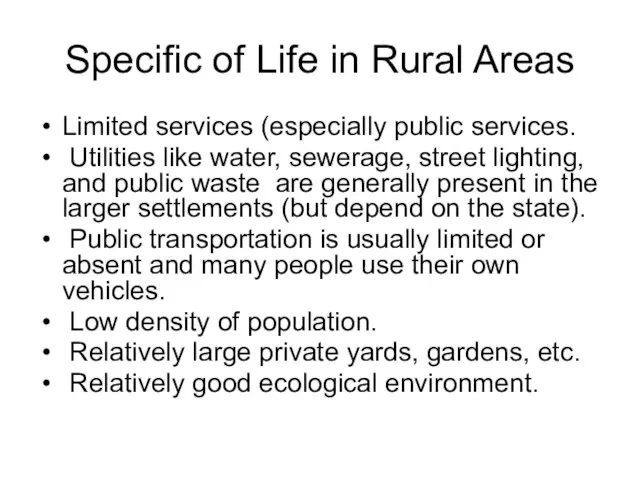
water, sewerage, street lighting, and public waste are generally present in the larger settlements (but depend on the state).
Public transportation is usually limited or absent and many people use their own vehicles.
Low density of population.
Relatively large private yards, gardens, etc.
Relatively good ecological environment.
Слайд 15
INTEGRATION OF URBAN AND RURAL WAYS OF LIFE
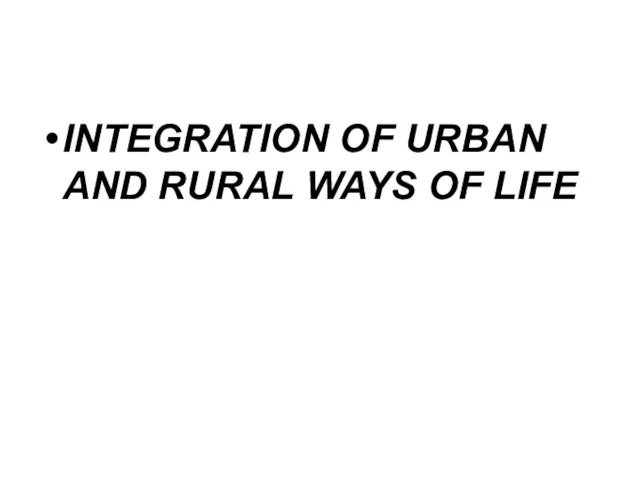
Слайд 16New forms of urbanization
Traditional urbanization is a concentration of human activities and
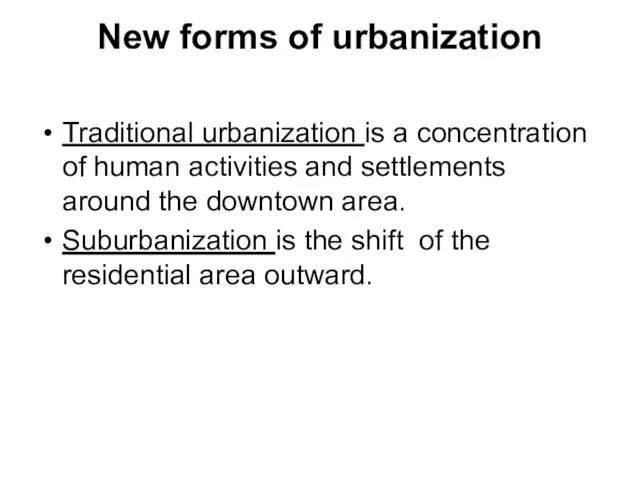
settlements around the downtown area.
Suburbanization is the shift of the residential area outward.
Слайд 17Transformation of distances
Distance is measured by accessibility.
1. Physical distance (miles, km).
2.
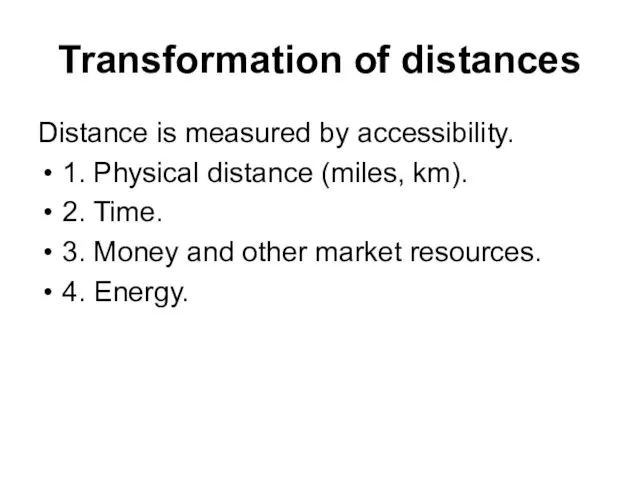
Time.
3. Money and other market resources.
4. Energy.
Слайд 18Travel distances
Walking (10–30 km/day).
Horse travelling (up to 40 km/day ).
Sailing
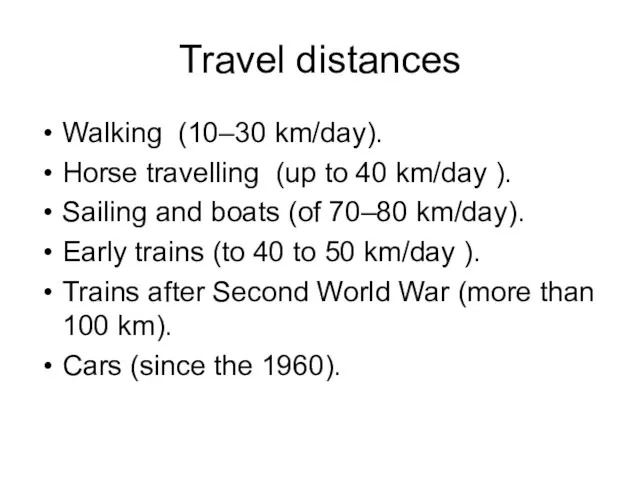
and boats (of 70–80 km/day).
Early trains (to 40 to 50 km/day ).
Trains after Second World War (more than 100 km).
Cars (since the 1960).
Слайд 19pattern of movement
The daily ‘go and back’.
‘Zig-zag’.
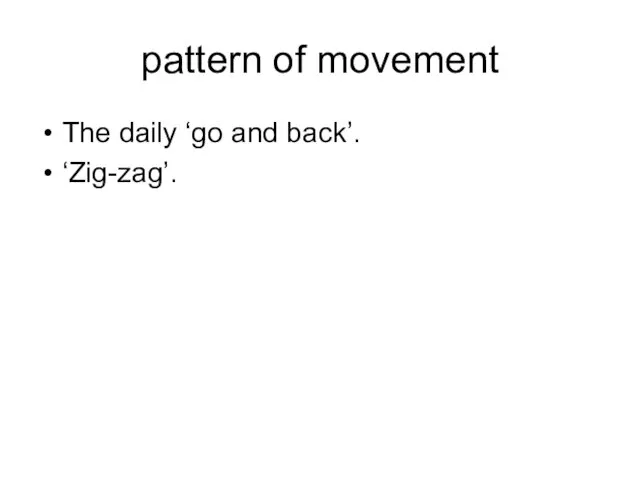
Слайд 20Suburban Crises
Factors of evolution:
1. The ‘filling’ of the urban fringe with
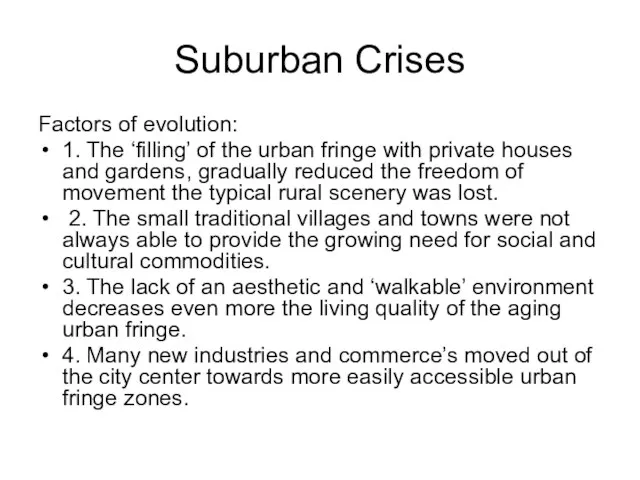
private houses and gardens, gradually reduced the freedom of movement the typical rural scenery was lost.
2. The small traditional villages and towns were not always able to provide the growing need for social and cultural commodities.
3. The lack of an aesthetic and ‘walkable’ environment decreases even more the living quality of the aging urban fringe.
4. Many new industries and commerce’s moved out of the city center towards more easily accessible urban fringe zones.
Слайд 21New Urbanism
New Urbanism was a movement which started in the 1980s.
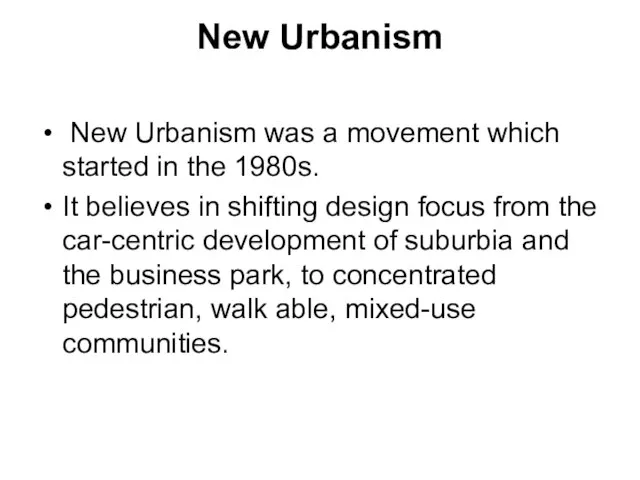
It believes in shifting design focus from the car-centric development of suburbia and the business park, to concentrated pedestrian, walk able, mixed-use communities.
Слайд 22New points of concentration outside the downtown
networked, poly-centric form of concentration;
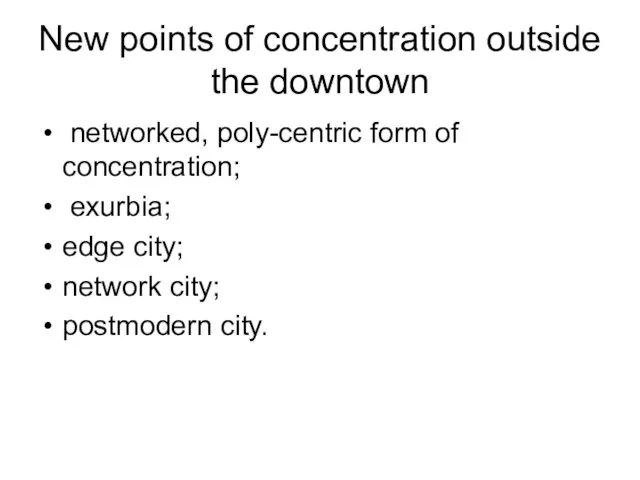
exurbia;
edge city;
network city;
postmodern city.
Слайд 24Concentric models
of urbanization
1. The urban core: the completely build up area .
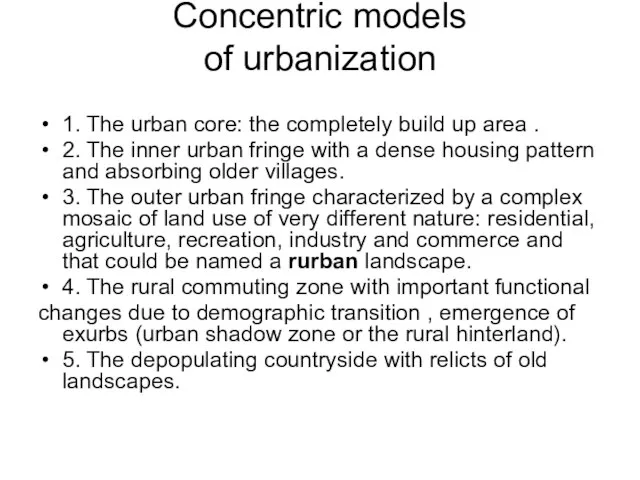
2. The inner urban fringe with a dense housing pattern and absorbing older villages.
3. The outer urban fringe characterized by a complex mosaic of land use of very different nature: residential, agriculture, recreation, industry and commerce and that could be named a rurban landscape.
4. The rural commuting zone with important functional
changes due to demographic transition , emergence of exurbs (urban shadow zone or the rural hinterland).
5. The depopulating countryside with relicts of old landscapes.
Слайд 28
A multiple star-shaped or ‘sparkling’ spatial
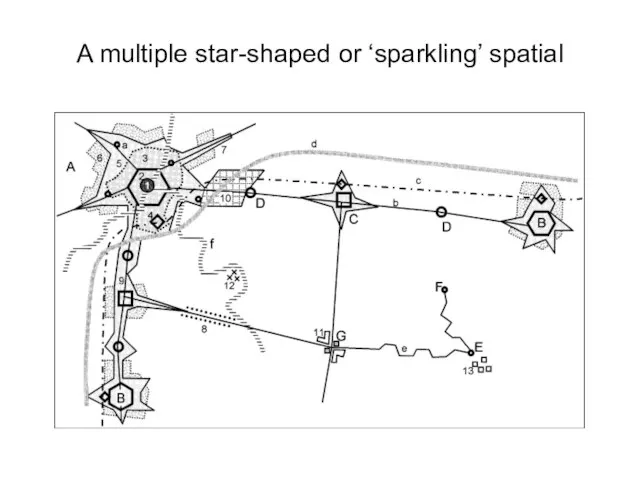
Слайд 32Rural desert
Vast areas of the rural Europe show an impressive decrease of
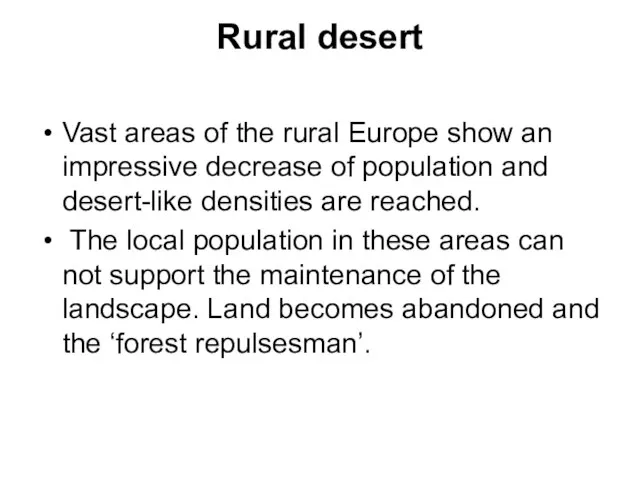
population and desert-like densities are reached.
The local population in these areas can not support the maintenance of the landscape. Land becomes abandoned and the ‘forest repulsesman’.





















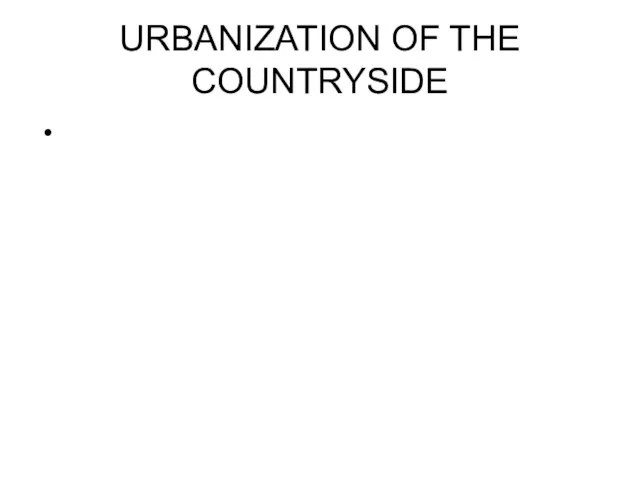

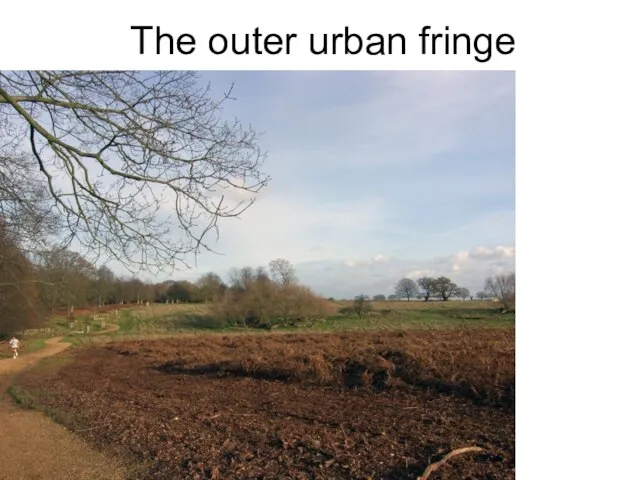
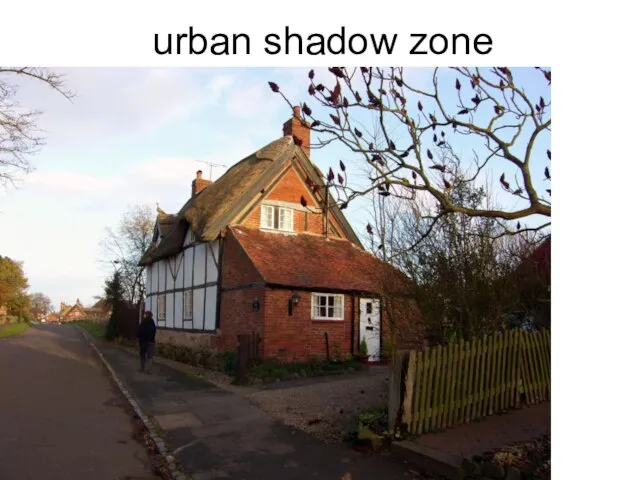
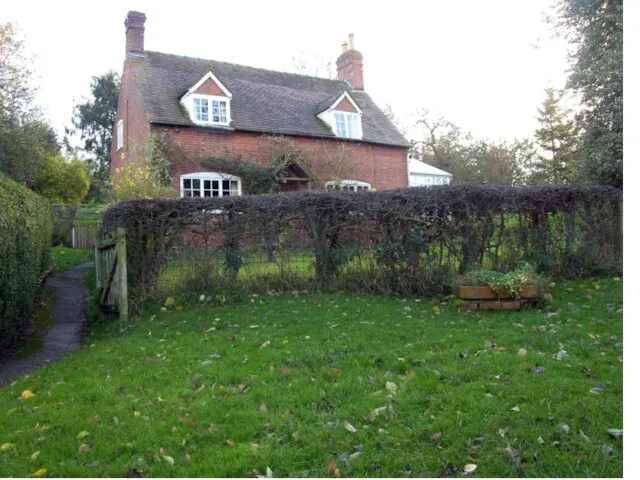

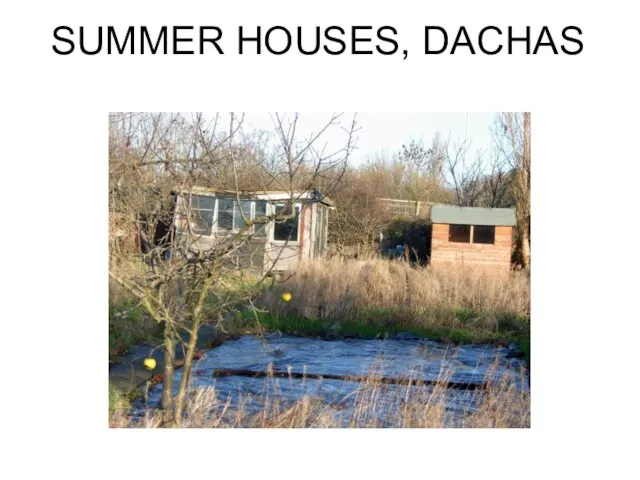
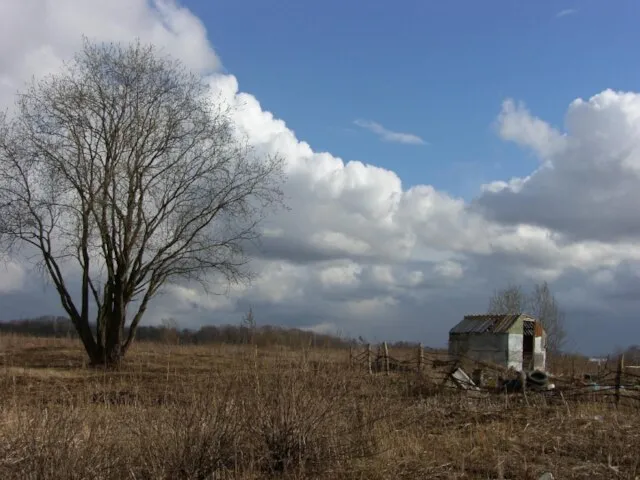
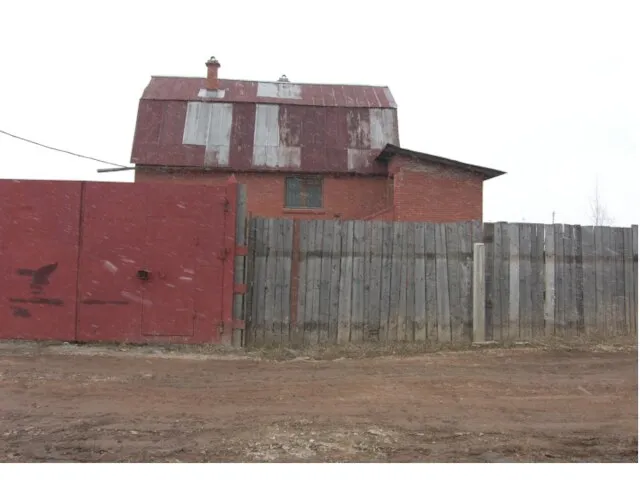

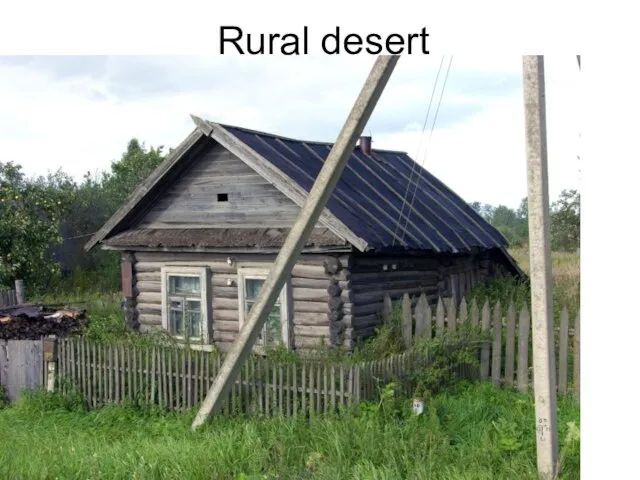
 Направление подготовки Международные отношения
Направление подготовки Международные отношения Коммерческое предложение. Страхование грузоперевозок и грузов
Коммерческое предложение. Страхование грузоперевозок и грузов Структура координационных соединений и металл-органических каркасов
Структура координационных соединений и металл-органических каркасов Сущность, направления, виды проектного анализа
Сущность, направления, виды проектного анализа Пути к клиенту. Тренинг
Пути к клиенту. Тренинг Презентация на тему Рекомендации по написанию дипломной работы
Презентация на тему Рекомендации по написанию дипломной работы Теория современного урока
Теория современного урока Презентация на тему Летят перелетные птицы...
Презентация на тему Летят перелетные птицы... Влияние сквернословия на здоровье человека
Влияние сквернословия на здоровье человека Презентация на тему Земледельцы Аттики теряют землю и свободу
Презентация на тему Земледельцы Аттики теряют землю и свободу  Проект «Практика» - презентация
Проект «Практика» - презентация Направления внеурочной деятельности
Направления внеурочной деятельности Пример презентации Первая мировая война
Пример презентации Первая мировая война Презентация на тему Имидж делового человек
Презентация на тему Имидж делового человек Технический кластер Атомкласс
Технический кластер Атомкласс Проект учителя начальных классов МАОУ СОШ № 18 Мельчиной Наталии Аркадьевны
Проект учителя начальных классов МАОУ СОШ № 18 Мельчиной Наталии Аркадьевны Миграции населения России
Миграции населения России Find the rhyme
Find the rhyme Публичная презентация учителя москвоведения ГОУ ЦО № 1462 Докукиной Натальи Викторовны
Публичная презентация учителя москвоведения ГОУ ЦО № 1462 Докукиной Натальи Викторовны «Коучинг в образовании— инновационная технология поддержки в обучении и индивидуально-личностном развитии обучающихся»
«Коучинг в образовании— инновационная технология поддержки в обучении и индивидуально-личностном развитии обучающихся» bf52fa922c864de4a0f4ccd224df0767
bf52fa922c864de4a0f4ccd224df0767 Мода в стиле хип-хоп
Мода в стиле хип-хоп ПРЕЗЕНТАЦИЯ ШКОЛЕ
ПРЕЗЕНТАЦИЯ ШКОЛЕ FolderBrowserDialog
FolderBrowserDialog Самый выгодный в году Зеленый день 11-12 ноября 2021 года
Самый выгодный в году Зеленый день 11-12 ноября 2021 года Проектна тему «Ветеринар»
Проектна тему «Ветеринар» ИНФОРМАЦИОННЫЙ ДЕНЬ ПРОГРАММЫ ТЕМПУС Казахстан, Октябрь 2011 Белен Энсисо, Руководитель программ, Исполнительное Агентство по Обра
ИНФОРМАЦИОННЫЙ ДЕНЬ ПРОГРАММЫ ТЕМПУС Казахстан, Октябрь 2011 Белен Энсисо, Руководитель программ, Исполнительное Агентство по Обра Герои басен - реальные животные
Герои басен - реальные животные